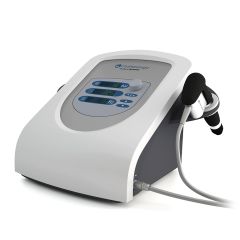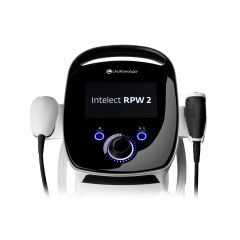Radial Pressure Wave Therapy: A Promising Treatment Option for Total Knee Arthroplasty Patients
Total knee arthroplasty (TKA) is a common procedure that can significantly improve quality of life for those suffering from severe knee problems. However, the road to recovery can be long and challenging due to stiffness and pain that can persist for months after surgery. Enter radial pressure wave therapy – an innovative treatment that's showing promising results for TKA patients.

Understanding Radial Pressure Wave (RPW) Therapy
RPW therapy is a high acoustic energy treatment that uses mechanical pressure waves to stimulate the body’s natural tissue repair processes. While not a true "shockwave," RPW therapy falls under the same umbrella as shockwave therapy and works through a process called mechanotransduction.
How RPW Works:
- An air compressor creates a "puff" behind a metal pellet
- The pellet strikes the back of a transducer
- The transducer relays energy through a treatment tip into the patient's tissue
- The energy propagates radially and decreases as it penetrates deeper into the tissue
Customizing Treatment:
- Intensity is adjusted using bar pressure (1-5 bars on Chattanooga® devices)
- Different applicator tips (plastic, steel, titanium) allow for varying energy levels
- Treatment can reach up to 6cm deep with titanium heads
RPW for TKA Patients: A Case Study
David Levine, a physical therapist and researcher, recently shared his experience using RPW therapy on a TKA patient in an Enovis™ webinar.
Patient Profile:
- Middle-aged, active male
- Two months post-TKA
- Complaints: constant pain over lateral IT band, reduced knee flexion due to stiffness
Treatment Results:
- Received three RPW treatments
- Noticed quick improvements in range of motion
- Pain decrease began after a couple of days
- Consistent pain reduction following initial improvement
Applying RPW to TKA Patients
When using RPW on TKA patients, keep in mind:
- Avoid treating directly over metal implants
- Adjust intensity and applicator head for comfort, especially near superficial bone
- Use patient feedback to guide treatment intensity (aim for 6/10 discomfort level)
- Expect discomfort to decrease within 90 seconds to 2 minutes of treatment
Potential Benefits for TKA Patients:
- Addresses soft tissue problems around the joint
- Improves muscle aches and pains
- Increases circulation
Patient Perspective:
The treated patient reported significant improvements:
- Substantial pain relief, especially in problematic areas like IT band insertion
- Longer-lasting effects compared to dry needling
- Improved mobility and reduced reliance on assistive devices
Radial pressure wave therapy shows great promise for TKA patients struggling with post-operative stiffness, pain, and limited range of motion. By addressing soft tissue issues and pain, RPW can help patients progress more quickly in their recovery, which may lead to improved function and quality of life as demonstrated in the aforementioned case study. As with any treatment, it's essential to tailor the therapy to each patient's unique needs.
Looking for more information on RPW therapy?
Enovis has several resources to help you learn more about RPW therapy and its many applications in the treatment room. Click any of the links below to access our recommended tools and resources on RPW therapy.
- [Demonstration] Request a demonstration from your local Chattanooga territory manager.
- [Webinar] Radial Pressure Wave Treatment for Total Knee Arthroplasty Patient
- [Webinar] Management of Tendinopathy Using Shockwave and Laser Therapy
- [eBook] Shockwave and Laser Therapy for Lower Leg Injuries 101
Results from this case study are not predictive of future results.
Individual results may vary. Neither DJO, LLC nor any of the Enovis companies dispense medical advice. The contents of this document do not constitute medical, legal, or any other type of professional advice. Rather, please consult your healthcare professional for information on the courses of treatment, if any, which may be appropriate for you.


